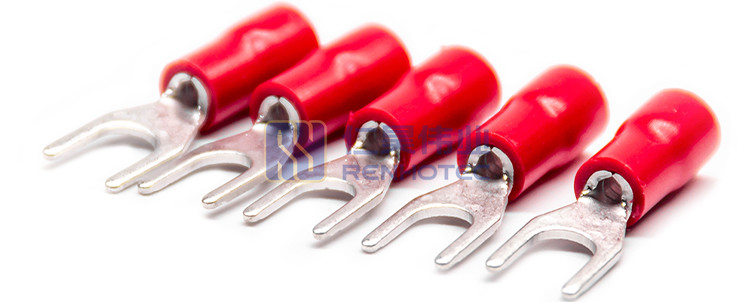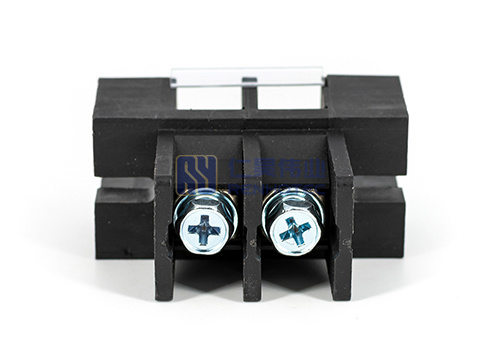The terminal block is an accessory product for electrical connections. With the degree of industrial automation and industrial control requirements increasingly high, the number of terminal blocks gradually rises.
With the development of the electronics industry, the use of terminal blocks and more and more types. At present the most widely used in addition to PCB board terminals, there are hardware terminals, nut terminals, spring terminals, and so on.
In 1928, Phoenix Contact invented the world’s first combination terminal block. This is the prototype of modern terminals and is also the first invention patent Phoenix Contact applied for and obtained. Since then, Phoenix Contact has been passionate about innovation and committed to developing various connection technologies, forming a perfect system of electrical interface technology.
Many of these product lines have become the industry standard. Currently, CLIPLINE has more than 3,000 types of products. They are suitable for electrical connections in various industrial control and electrical cabinets.

Definition of the Terminal Block
The terminal block facilitates the connection of wires and applications; it is a section of metal sealed in the insulating plastic inside the piece. It has holes at both ends to insert the wire; there are screws for fastening or loosening.
For example, two wires sometimes need to connect and sometimes need to disconnect. In this case, they can be connected with a terminal and can be disconnected at any time. This makes it easy and fast without having to solder them together or twist them together. And it is suitable for interconnecting a large number of wires.
In the power industry, there is a special terminal block, and terminal box, the top is full of terminals, single, double, current, voltage, ordinary, breakable, etc. A certain crimping area is to ensure reliable contact, as well as to ensure that sufficient current can be passed.
The Classification of Terminal Blocks
Terminal block mainly has European type terminal block series, plug-in terminal block series, fence type terminal block series, spring type terminal block series, rail type terminal block series, through the wall type terminal block series, photoelectric coupling type terminal block series, etc.

1. Plug-in Series Terminal Block
Plug-in series terminal blocks have two parts plugged and connected. One part presses the wire into place and then plugs into the other part. This part is soldered to the PCB board. This anti-vibration design ensures a long-term airtight connection and the reliability of the finished product. The sockets can add assembly lugs on both ends, primarily protecting the tabs and preventing poor alignment. The socket design also ensures that the socket will fit properly into the female body.
The sockets can also have assembly and locking fasteners. The assembly fasteners provide a more secure fixing to the PCB board. The locking snap position can lock the master and socket after installation. A variety of socket designs can match the different insertion methods of the masters. For example: horizontal, vertical, or inclined to the PCB, etc. Different methods can be selected according to customer requirements. Both metric and standard wire gauges are available.
It is suitable for the power supply equipment, automotive industry, LED lighting, computer room equipment, home appliances, security equipment, industrial control equipment, special appliances, etc.
2. European Series of the Terminal Block
It is the most cost-effective form of existing wiring technology.
It is suitable for building electrical, industrial control equipment, solar photovoltaic, automotive industry, LED lighting, wind power generation, instrumentation, medical equipment, etc.
3. Fence-type Series Terminal Block
Fence-type series terminal blocks can achieve safe, reliable, and effective connections. Especially in the high current, high voltage use of the environment more widely.
It is suitable for electrical control and distribution systems, industrial automation systems, power electronics, ship distribution systems, highway and bridge lighting systems, security monitoring systems, medical equipment, etc. Such as surgical light dimmers, respirators, distribution control panels in ship cabins, load centers, and integrated control systems, and other equipment.
4. The Spring-type Terminal Block
The spring-type terminal block is a new terminal block using a spring device. Applicable to the world electrical and electronic engineering industry. Such as lighting, elevator lift control, instrumentation, power, chemical, and automotive power.
It is suitable for electronic equipment, industrial automation, robotic systems, energy and power systems, automotive electronics, LED lighting, billboards and other outdoor lighting, fire alarm, and security systems.
5. Rail-mounted Terminal Block
Rail-mounted terminal block adopts reliable threaded connection technology, electronic tolerance break technology, and the latest electrical connection technology.
It is widely used in power electronics, communication, electrical control, power supply, etc.
6. Orbital Series Terminal Block
Orbital series terminal blocks use crimping and unique thread self-locking design, making the wiring connection reliable and safe. The series of terminal blocks have a beautiful and generous appearance design and can be equipped with a variety of accessories. Such as short-circuit pieces, marking strips, baffle plates, etc.
It is suitable for railroad transportation, ships, industrial automation control, import and export trade, instrumentation and measurement, voltage conversion and transmission, oil and gas extraction, wind power and photovoltaic, etc.
7. H Type Through the Wall Type Terminal Block
H type through the wall type terminal block using screw connection line technology, the insulation material is PA66 (flame retardant grade: UL94, V-0), connectors using high-quality highly conductive metal materials.
H-type through-wall terminal blocks are available for side-by-side installation on panels of 1mm to 10mm thickness. The distance of the panel thickness can be adjustable automatically and form any number of poles of terminal blocks. And it is possible to use the isolation board to increase the air gap and creepage distance. Without any tools that can wear the wall-type terminal block firmly in the panel of the rectangular reserved hole, installation is extremely easy.
H type through the wall type terminal block is suitable for some need through the wall solution occasions. For example: power supply, consider an oscilloscope, electrical control cabinet, and other electronic equipment. Good insulation performance and high protection level. Users only need to work directly after the external wiring, eliminating many unnecessary wiring steps.

8. All-copper Terminal
All-copper terminals can avoid the battery effect of steel metal parts and copper wires in a humid environment. There is a connection hole in the middle of the terminal, and it can connect in the center or can connect with the side plug type connector. Can connect 4mm² wire voltage 800V current 41A electrical connection products.
It is suitable for high-temperature environments, aerospace, oil and gas production, power transformers, building electrical and lighting, battery assembly, traffic signal electronics, etc.
The wiring terminal utilizes the existing rail-type terminal block RTB connection technology. And the circuit composed of electronic components is added to realize the transmission coupling of the photoelectric process.
The core of automatic control is that the control unit must be reliably isolated from each sensor and actuator to avoid interference. The optical isolation terminal has the advantages of lower signal loss at the control end, high switching frequency, no mechanical contact jitter, wear-free switching, high insulation voltage, and long life, etc. Therefore, it is widely used in the field of automatic control.



